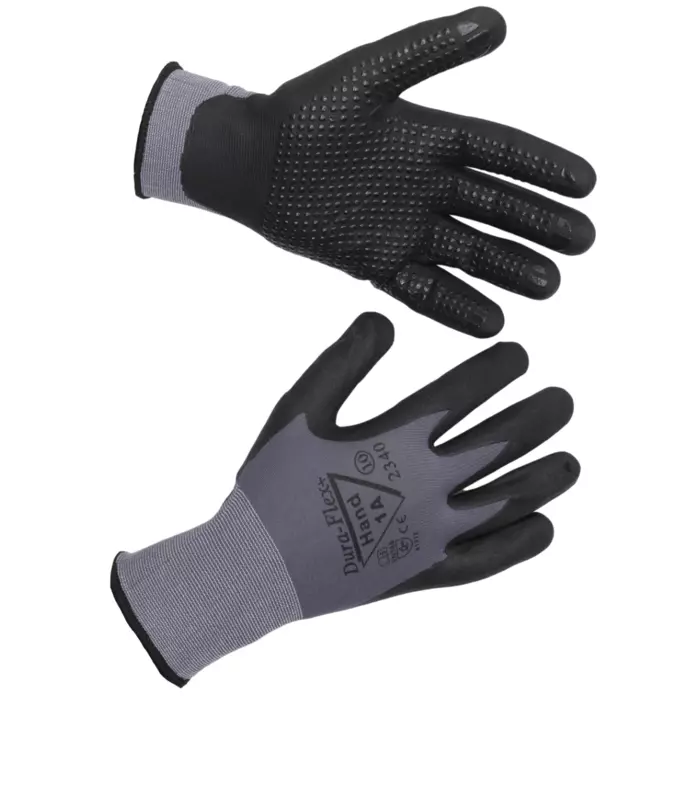
Features You'll Love

Cuff Style · Knit
EN 388 · Puncture Resistance Level 1, Tear Resistance Level 3
A snug knit cuff comfortably seals out debris and keeps your gloves securely in place, ensuring a comfortable and protected fit.
Provides basic protection against punctures from blunt objects like splinters, not sharp points like needles.
Offers strong resistance against ripping, making the material durable against snags and tears.

EN 388 · Abrasion Resistance Level 4
Offers the highest level of protection against intense rubbing and wear from rough materials.

Grip Finish · Dotted
The surface texture or coating on the palm and fingers that determines how securely the gloves can grip tools, materials, and surfaces during work tasks.
Hand1A
Dura-Flex Dura-Flex Coated Gloves, 12 pairs
Dura-Flex Dura-Flex Coated Gloves, 12 pairs
4.7 / 5
44,80 €
Price per 12 pairs
3,73 € / pair
Choose size
Shipping fee is 7,94 € for orders under 80,00 €
Features You'll Love

Cuff Style · Knit
EN 388 · Puncture Resistance Level 1, Tear Resistance Level 3
A snug knit cuff comfortably seals out debris and keeps your gloves securely in place, ensuring a comfortable and protected fit.
Provides basic protection against punctures from blunt objects like splinters, not sharp points like needles.
Offers strong resistance against ripping, making the material durable against snags and tears.

EN 388 · Abrasion Resistance Level 4
Offers the highest level of protection against intense rubbing and wear from rough materials.

Grip Finish · Dotted
The surface texture or coating on the palm and fingers that determines how securely the gloves can grip tools, materials, and surfaces during work tasks.
Product description
The product description has not been specified